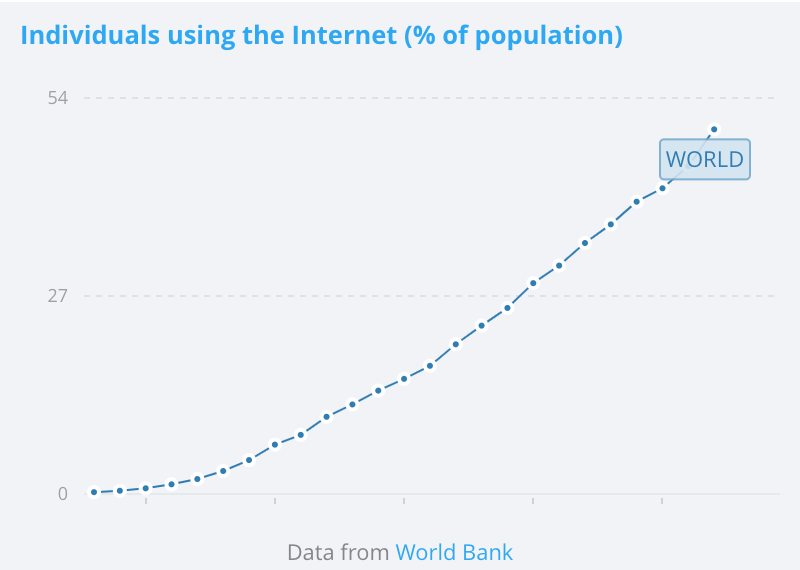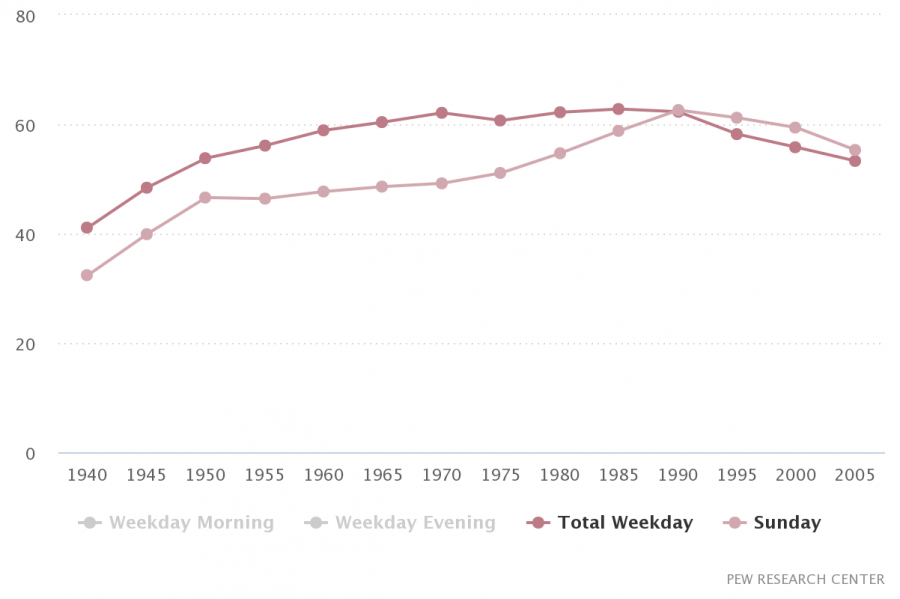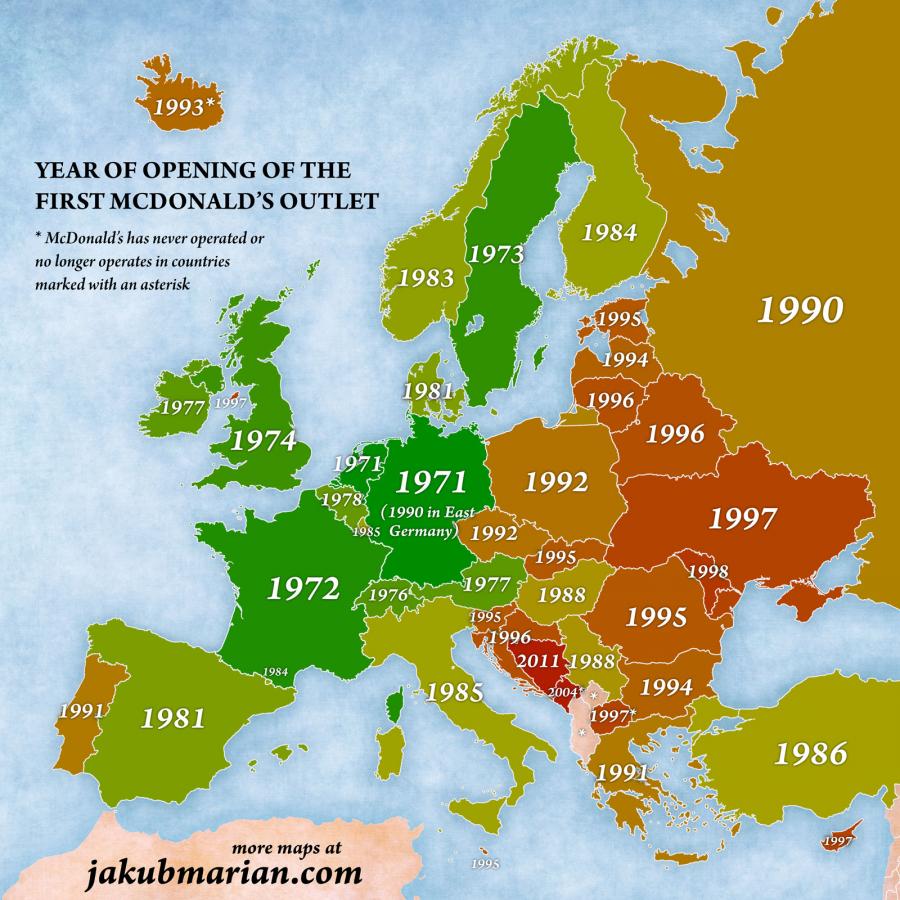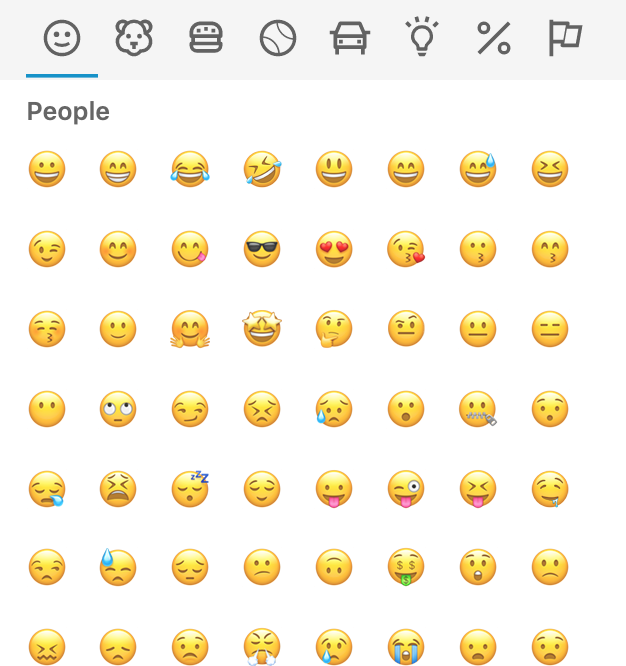
How globalization has changed corporate communication
The way corporations communicate has changed significantly over the last 30 years. In times of nation-states and “zoning,” global communication between businesses and consumers was a rare phenomenon. Even if companies were interested in running multi-national campaigns, the available tools to conduct them were fairly limited. In the 1990s, however, two impactful events led to significant changes in the business world: the end of the Cold War, and the adoption of the internet as the new and major communication tool (Angelides, 1997).
Globalized, digitalized corporate communication
Today, most corporations see tremendous value in global communication. Former partition schemes of the world are now almost non-existent. The internet and mobile technologies have spread to a large part of the world and much of corporate communication, internal or external, takes part online. As a consequence, consumers, stakeholders, and employees expect more and more detailed information to be easily accessible at any time. Data found online must be frequently checked and updated while there is a constant demand for new content.

Figure 1. Individuals using the Internet (November 1, 2019). Retrieved January 7, 2020, from https://data.worldbank.org/indicator/it.net.user.zs?end=2018&name_desc=f...
Apart from increased connectivity and information availability, the internet is also influencing the way we use language. Abbreviations, emojis, and memes are just a few new forms of expression that have become part of the daily language of internet users, and are now also finding support within corporate communication (Baron, 2010).
How did we get here?
External communication practices have always been a significant element for a comapny to distinguish itself from its competitors as it is through external communication that companies engage with their customers and shareholders. Nowadays, external corporate communication reaches new customers or investors and nurtures sustainable relationships with existing customers, investors or partners. A look into the past, however, reveals a radically different situation.
Between 1960 and 1990, when the phenomena of the internet, mobile technologies, and super-diversity were not around, communication technology experienced a period of relative stagnation (Staples, 1999).
Key communication channels before 1990
After World War II, communication became an essential contributor to a company's success. Print media such as newspapers, magazines, and journals, had significant reach in western populations, with the circulation of daily newspapers in the US reaching an all-time high in 1990.

Figure 2. Circulation of daily newspapers in the United States. Retrieved January 20, 2020, from https://www.journalism.org/numbers/u-s-daily-newspaper-circulation-5-yea...
Radio stations also obtained an important position in the communication market: FM radio emerged as the fastest-growing segment of the broadcast business in the US during the 1960s. The rise of approximately 1,500% in the number of TV households in the US from 1950 to 1970 also illustrates the increasing importance of the TV as a new medium.
As for print media, letters or brochures could be used to rearch people individually and locally. Traditional outdoor advertising such as banners and columns could also complement communication. However, communicating in these forms was rather time-consuming and expensive.
Local and global communications before 1990
Following Appadurai’s (1996) global cultural flow theory on mediascapes, we can see that, between 1950 and 1990, the typical media landscape present in many western civilizations consisted of three layers.
The highest level was represented by national media outlets which reached the vast majority of a country's population, such as Times Magazine, NBS or NBC in the US.
The medium layer, distributed and broadcasted on a regional level, focused on regions such as parts of federal states or metropole areas. For instance, Germany’s Süddeutsche Zeitung focused on the Southern part of Germany, while the Südwestrundfunk broadcasted radio and television to the South-West of Germany.
On the lowest level, local media outlets focused on regional districts, cities, or even parts of a city. Newspapers such as the Esslinger Zeitung in Germany focused on a population of fewer than one hundred thousand people. Although print media was prevalent on a hyper-local scale, television programs usually did not exist at lower levels (e.g., for single cities or districts).
Considering that English was not largely spoken in non-English speaking countries, and given the “zoning” effect caused by the ongoing Cold War, reaching a global audience was almost impossible at this point linguistically and logistically.
The language of business before 1990
National languages are an integral part of nation-based societies. Despite phenomena like "Americanization," a term which describes the influence of American culture and politics on western nation-states, local languages dominated communication in pre-globalization times. English literacy was already widely spread in previous colonies of the British Empire, yet citizens of countries like Germany, France, and China still lacked communicative skills in English (Crystal, 2012).

Figure 3. Americanization: McDonald’s expansion in Europe (source: Wikipedia). Retrieved January 20, 2020, from https://jakubmarian.com/year-of-opening-of-the-first-mcdonalds-outlet-eu...
As a result of the above, direct external communication rarely occurred in pre-digitalization societies, so communication specialists often formed messages in a distanced voice (e.g., in letters). This had a significant impact on business language, which was shaped as predominantly formal and distanced. Some human resource departments even had standardized processes for language use, and employees had to participate in training that would improve both their native and their foreign language skills (Marschan-Piekkari et al., 1999).
Digitalization and new communication tools
With the advent of the internet in the 1990s, communication specialists in western societies suddenly received access to a new repertoire of tools, which would later prove to be indispensable elements for effective corporate communication. Perhaps the most critical of these tools was the internet.
Today, the internet is the main infrastructure for private and public communication. Internet-based chatting applications like WhatsApp are home to billions of regular users from all around the world. According to official statistics, Facebook has more than 2.4 billion users currently, while The Radicati Group reported that more than 3.8 billion people used email communication in 2018.
This should not be surprising. The internet offers cheap and instant communication, private or public, on regional, national, and global scales, and is available at any given moment. Infrastructure upgrades of the internet itself, such as the World Wide Web and particularly Web 2.0, offered even more convenience to users. In today’s version of the web, users do not only consume but also produce information.
Companies have started to shift their communication to the internet since the 1990s. For example, today, at least 60% of small and medium-sized businesses globally maintain a website.
Company websites
Company-owned websites are fundamental elements of corporate communication worldwide. Unlike printed brochures and similar material, a website can be updated at any time in the blink of an eye. Widely available tools even allow automated real-time updates of various data, such as customer information or stock prices. Moreover, most websites are accessible from all over the world and can even be programmed to provide translations based on a visitor’s location.
Most importantly, a website can also be a center for communication. Modern corporate websites establish direct communication opportunities (e.g., chatbots), and some operate in-house blogs that publish company news, general information or educational content. Besides, websites often link to other communication channels, such as press appearances, social media accounts, partners or other web appearances.
Social media
Social media platforms like Facebook, YouTube, Pinterest, and Instagram represent another exemplary apparatus for short and frequently distributed messages, which has become very popular in the space of corporate communication. Since 2010, 69% of Fortune 2000 corporations actively maintain at least one social media account (Smith et al., 2015).
State-of-the-art social networks come with simple user experience, allowing for smooth interaction between users and the platform. Furthermore, virtually every social platform supports multi-media content (text, imagery, audio, and video) and allows direct communication. Another popular strategy among corporations is to maintain separate profiles for different locations, purposes, or demographics.
Content marketing
With Google maintaining a leading position as the world’s most-visited website in recent years, content marketing has been widely used as a method to reach new customers since the earliest days of the World Wide Web. Although other types of content, like video and imagery, swiftly found their way to the internet, the principle of web search engines remained vastly the same.
Search Engine Optimization (SEO) is used by communication specialists to target specific demographics and locations. In order to reach a defined group of people, the language used does not need to match the native language of said group. As the world becomes more and more literate in English, English content appears to be sufficient to reach European, South American, African, and Asian audiences (Babcock et al., 2001).
Online advertising
Online advertising, mostly in the form of digital banners and sponsored content, has also emerged as a significantly used communication method. Within a few years, ad networks like Google Ads enabled advertisers to distribute messages through industry-relevant websites seamlessly, while also targetting particular audiences. With almost unlimited data available, social media platforms brought targeted advertising to a whole new level.
Today, communication specialists can choose their audience with incredible accuracy.
Age, gender, location, profession, income, interests - the possibilities to assemble the perfect target audience are seemingly infinite. The wide range of popular social networks further increases targeting options. Facebook and Instagram are often used to reach consumers, while LinkedIn, on the other hand, allows efficient communication to a business audience. As a result, today, communication specialists can choose their audience with incredible accuracy.
The new language paradigm
As globalization progresses, human societies enter a stage of "informationalism," whereby knowledge becomes one of the most valuable commodities. Network societies are formed to improve productivity, competitiveness, and economic efficiency by exchanging knowledge (Castells, 2010). Consequently, the global society needed a lingua franca for transnational communication.
According to a 2012 article published in the Harvard Business Review, English obtained the status of global business language shortly after the end of the 20th century. Many corporations from every corner of the world are now using English as their primary language for both internal and external communication.
At the same time, digitalization has heavily influenced language use as it introduced new types of abbreviations and linguistic varieties (such as “LOLspeak”) as well as new forms of expression like smileys and emojis. Further, online chatting is significantly different from paper communication in various other respects. For example, sentences are missing linking words, words are frequently misspelled, and punctuation is often omitted (Crystal, 2011).
Despite their informal characteristics, emojis are entering the language repertoire of business circles.
Emojis are also widely used in a substantial part of human interactions. In person-to-person offline interactions, non-verbal aspects of communication play a tremendously important role. Accordingly, in the online nexus, emojis are used to indicate feelings, thoughts, and opinions as they resemble facial expressions, gestures, or objects. This development is so pervasive that some are now discussing a global and universal language based on smileys and emojis, and its implementation into school systems (Jibril & Abdullah, 2013).
These changes have also affected business communications as corporate accounts on social media are also part of internet culture. Despite their informal characteristics, emojis are entering the language repertoire of business circles. Many email services, including Gmail, have already enabled a wide selection of emojis. The business-focused social media platform LinkedIn also merges conventional social media chat applications with the business world, which provides a genuine environment for emoji communication. Since emojis are mainly used to express emotions and thoughts, they are introducing a personal tone to business language.

Figure 4. LinkedIn emoji selection (January 20, 2020). Retrieved January 20, 2020, from https://linkedin.com. Screenshot by author.
Pepsi - a case study of corporate communication in 2019
The US beverage corporation PepsiCo, Inc. is commonly known for its soft drinks and being the arch-rival of key competitor Coca Cola. Founded in 1898, Pepsi now owns more than 22 food brands, generating annual sales above $1 billion and gross revenue of around $64 billion. This makes PepsiCo the largest food and beverage business in the US.
As far as communication channels go, first and foremost, Pepsi is actively maintaining several types of websites. Its official consumer website can be reached through “pepsi.com,” while the domain of the actual corporation website is “pepsico.com.” The company also owns several other separate websites, such as “pepsicojobs.com” or “pepsicopartners.com.”
But Pepsi's use of internet media doesn't stop there. As the Pepsi brand aims to be as present as possible online, the corporation currently manages multiple accounts, on more than ten widely used social media platforms; most dominantly, Facebook, Twitter, Instagram, and YouTube. Its social media team accommodates local social media preferences (such as WeChat in Asian regions) in order to be omnipresent and always reachable to customers. Some digital communication channels are solely available for specific regions, including email-based newsletters and in-house blogs.
As of 2019, Pepsi maintains at least 30 versions of its consumer-focused websites.
The brand is also known for its aggressive advertising strategies. Alongside digital communication, Pepsi is maintaining its analog communication as well. The company actively runs print, TV, radio, and outdoor advertising campaigns, and still relies on traditional print media fairly extensively (Pepsi, Inc., 2015).
Local vs. global communication
As of 2019, Pepsi maintains at least 30 versions of its consumer-focused websites. Maintaining a variety of localized accounts significantly enhances communication with customers and stakeholders. After all, despite rising English literacy worldwide, many people presumably still prefer communicating in their native language. Pepsi also uses several ways to leverage the great amount of localized content. Depending on the users' mother tongue or location, algorithms automatically redirect them to a local and translated version of the main website (e.g., "pepsi.de" for German-speaking visitors). Additionally, the corporation maintains 28 versions of its business-focused website, “pepsico.com.” This corporate website, however, does not automatically redirect to translated versions. This could be due to the role of English has in international companies.
Through its diverse social media channels, as well as through ad networks, Pepsi is also making use of geo-targeted advertisements. As part of its media strategy, the brand is actively working with regional, national, and global media outlets to promote its products. According to the business publication Fast Company, Pepsi launched its first global advertising campaign in 2012.
Nonetheless, not all regions are treated equally. While Pepsi has a dedicated Facebook account for German consumers, there is no official Pepsi Germany account on Twitter. On the other hand, the company-run account "Pepsi India" can be found on Indian Twitter. The company uses this approach to concentrate its resources on the right channels rather than being present on all social networks in every country. Germans, for instance, are significantly less present on Twitter than on Facebook. Although the situation is not much different in India - where roughly 90% of social media users have a Facebook account while only 1.75% are on Twitter - the nation's 1.3 billion inhabitants still enable worthwhile marketing for merely a tiny fraction of its total population.
Furthermore, there are also official non-region-related social media accounts on Twitter and other platforms, such as "Pepsi Jobs" and "Pepsi Football." Pepsi’s various sports accounts can be connected to its frequent role in sponsorships of major international sports events. Likewise, "Pepsi Jobs" also signals a rather transparent way to recruit new employees, which digitally-versed specialists could be interested in.
Pepsi's language
Pepsi appears to be using various communication patterns. The company’s international websites and social media profiles are all in English only. The company still maintains separate websites and accounts in local languages, but advertisements or posts are often partly or entirely in English.

Figure 5. Twitter post by Pepsi India (September 5, 2019). Retrieved November 01, 2020, from https://twitter.com/pepsiindia. Screenshot by author.
Figure 5 shows a Twitter post published by Pepsi India. While the language of the post’s text itself is Hindi, one of the included hashtags is in English. The entire video content for the advertisement is in English as well. This comes with increased cost efficiency, but it also follows the evolution of English to a global lingua franca. As a result, Indian citizens can share this advertisement with their foreign friends without any language barrier.
When examining how Pepsi communicates with its customers, one can observe that the company is directly communicating with other social media users using informal language (see Figure 6). Moreover, references to popular culture, smileys and emojis, memes, and slang are used by Pepsi’s social media team regularly. The company, therefore, adjusts to the cultural development of its target customers.

Figure 6. Pepsi using internet language (November 5, 2019). Retrieved November 05, 2019, from https://twitter.com/pepsi. Screenshot by author.

Figure 7. PepsiCo using informal language and emojis (November 5, 2019). Retrieved November 05, 2019, from https://twitter.com/pepsico. Screenshot by author.
Pepsi’s websites, on the other hand, use different language than its social media accounts. On its official consumer-focused website, Pepsi is still using variations of informal language but waives aspects such as slang, emojis, and memes. Through this strategy, Pepsi can please various groups of customers. Social media accounts feature a rather laid-back language that is often used by younger generations, which are currently dominating Twitter and co. Websites, on the other hand, focus on broader audiences and are thus based on more formal language.

Figure 8. Pepsi.com FAQ (n.d.). Retrieved January 07, 2020, from pepsi.com. Screenshot by author.
What does the future hold for corporate communication?
With globalization and digitalization still advancing at a rapid pace, the developments discussed above are likely to continue in the following years. However, it is worth noting that "peripheral" populations are not affected by digitalization in the same way as western civilizations are (Wallerstein, 2004). Both internet technology and online culture are spreading at a significantly slower pace in peripheries, which leaves corporations with complex puzzles to solve during the next decades.
Several other technological developments may have significant impacts on the way humans communicate. Emojis are closing the gap between informality and business language. Language, in general, is undergoing significant changes as grammar, punctuation, and spelling rules become more flexible in online communication (Crystal, 2011). Furthermore, algorithms are expected to have a substantially increased impact on communications. Content feeds, advertisements, chatbots, and smart assistants powered by artificial intelligence are already influencing human behavior online on a large scale. In the future, it is not unlikely that machines may conquer a bigger share of communications than many would be comfortable with.
References
Angelides, M. C. (1997). Implementing the Internet for business: A global marketing opportunity. International Journal of Information Management, 17(6), 405-419.
Appadurai, A. (1996). Modernity al large: cultural dimensions of globalization (Vol. 1). University of Minnesota Press.
Babcock, R. D., & Du-Babcock, B. (2001). Language-based communication zones in international business communication. The Journal of Business Communication, 38(4), 372-412.
Baron, N. S. (2010). Always on: Language in an online and mobile world. London: Oxford University Press.
Castells, M. (2010), The Rise of the Network Society. Second Edition with a new Preface. Wiley Blackwell.
Crystal, D. (2011). Internet linguistics: A student guide. Routledge.
Crystal, D. (2012). English as a Global Language (2nd Edition). London: Cambridge University Press.
Jibril, T. A., & Abdullah, M. H. (2013). Relevance of emoticons in computer-mediated communication contexts: An overview. Asian Social Science, 9(4), 201.
Marschan-Piekkari, R., Welch, D., & Welch, L. (1999). Adopting a common corporate language: IHRM implications. International Journal of Human Resource Management, 10(3), 377-390.
Pepsico, Inc. (2015). 2015 PepsiCo Annual Report. New York.
Smith, K. T., Blazovich, J. L., & Smith, L. M. (2015). Social media adoption by corporations: An examination by platform, industry, size, and financial performance. Academy of Marketing Studies Journal, 19(2), 127.
Staples, K. (1999). Technical communication from 1950–1998: Where are we now? Technical Communication Quarterly.
Wallerstein, I. (2004), World-systems analysis: An introduction. Durham: Duke University Press.